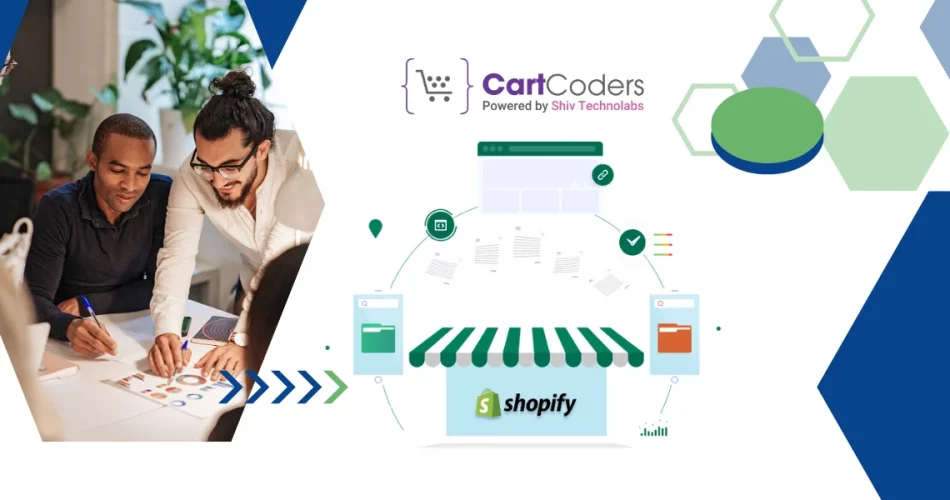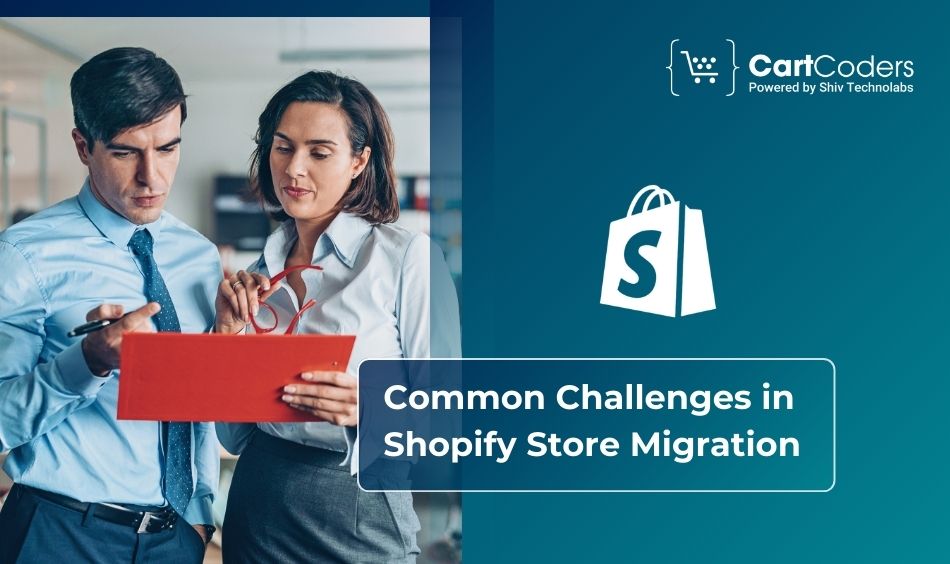Custom Engagement Solutions
Unlock tailored solutions with a free, no-obligation strategy session.
Expert Developers & Engineers on Demand
Scale Your Team with Skilled IT Professionals
Expert Guidance for Digital Transformation

Planning to move your eCommerce to Shopify? Be it technical reasons or any other, migrating any website to Shopify may feel like a daunting task.
Unlike setting up an online store from scratch on Shopify, migrating can be tough. But once done, it will improve the performance of your online store.
Can’t wait for your customers to make purchases on your website? Wondering why migrate to Shopify? Is it a long process?
What challenges will be faced during the Shopify migration process? How to recover them? Well, it is common to think so many things at a time.
To help you, here is everything you need to know.

Planning for an eCommerce revolution? Be it any online business you have, Shopify offers a robust and user-friendly solution.
However, the only pitfall is the challenges faced during the process as it is filled with obstacles. A wrong move or decision will affect not only your business cost but also your time and trust.
Worried about the hurdles that you might come across during your Shopify migration process? Can’t wait to make the best of your migration move?
So, to make sure your dream doesn’t turn into a nightmare, here are some common challenges you must avoid during Shopify store migration:
One of the major problems faced during Shopify store migration is downtime. 1 minute of downtime can cause major loss to your business.
This is because customers won’t be able to make purchases and stores can’t be accessed. Downtime is one of the major challenges and must be fixed at the right time. Wondering how? Here are some best tips:
Another common challenge during Shopify migration is the loss of data. Data migration negatively impacts the success of any new store.
Because migrating relocates your online business to a new location, it may cause some of your store’s page URLs to change. To ensure no data is lost:
Besides, you can also carry out other procedures by using a variety of Shopify migration tools or by seeking help from specialists.
If your business is on large-scale, you can solve the issue by writing scripts for bulk upload. Also, you’ll not face any technology problems or data loss as the entire process can be automated.
Another issue is the negative impact of SEO. After all the effort you put into improving your position on SERPs, you wouldn’t want to lose your ranking.
Since search engines have already indexed your previous URLs, any changes without proper redirection can cause your pages to appear as broken links.
So in addition to maintaining, focus on improving your store’s SEO.
Here are some best tips to follow:
Another issue faced during migration is reduced engagement and conversion rates, which leads to poor user experience.
Instead of overlooking user experience and mobile responsiveness, focus on creating a store that is responsive, eye-catching and easy to use.
Besides, also focus on:
Moreover, with the support of customer feedback, you can also make necessary changes during and after the testing period.
Overall, it is important to maintain a positive user experience during migration and avoid confusing customers with all changes.
When migrating your current eCommerce platform to Shopify, another challenge is duplicating unique features and functionalities.
If you want to increase customer experience and operational efficiency, your store should maintain its features and functions. Make a list of your key features and look through apps to find answers.
Another best thing you can do is hire reputed developers to create unique and customized Shopify solutions for you.
Besides, depending on the size of your eCommerce website, it can take months to migrate.
Therefore, you must create a solid plan to decrease the time-to-launch and for a hassle-free migration experience.
Legal compliance and security are other challenges that you might face during migrating to Shopify. This includes data privacy, accessibility standards and online payment.
So make sure your store complies with the most recent rules and all regulatory requirements. To fix these issues, here are some simple tips to follow:
Integrating Shopify with third-party apps and back-end systems is another challenge. This means when you migrate, some of your customers’ favourite features such as blogs, reviews, etc. might disappear.
This is where integrating your store with systems that accurately represent your brand becomes important. However, you can fix this issue with these simple steps:
Shopify is designed to keep user-friendly navigation in mind. Given your staff is already used to working differently, you must allow a natural process of relearning while you migrate.
However, this can be a challenge if no proper team training is provided. Your customer support team should know how to respond accurately to new questions from customers.
Here are some tips to follow:
Remember, clear communication not only prevents frustration but also assists in managing expectations from customers. Also, a smooth migration depends on the client and the team working productively.
Neglecting post-migration is another issue that occurs when migrating your eCommerce to Shopify.
This leads to problems such as glitches, poor customer experience or poor performance. It is advisable to prepare beforehand and find areas for improvement. For instance,
Due to unforeseen costs and complications before and after migration, many businesses go over their budget.
If neglected, this can be a major challenge. Want to finish your Shopify migration within your budget limit and time? Wondering how this can be done?
Here are some tips to follow:
When migrating to Shopify from an online store, one must ensure everything is working correctly. To ensure everything is functioning properly after migration, here is a detailed checklist for you:
Ready to leap into a profitable Shopify experience without falling into such Shopify migration challenges? As the best Shopify migration company, we at CartCoders aim to give the best Shopify migration services for the success of your business.
Be it any issues, our highly skilled team members are well-versed in solving every problem. We are equipped with all the tools and techniques for a seamless process.
From theme migration to post-migration, our services will open doors to operational excellence and rapid growth.
To ensure full functionality, we also offer third-party apps.
Connect with us for our tailored solutions and expert guidance. With our experts, your store’s success will move in the right direction leading to increased sales.
Projects delivered in 15+ industries.
95% retention rate, building lasting partnerships.
Serving clients across 25+ countries.
60+ pros | 10+ years of experience.